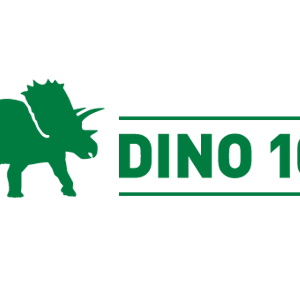Dino 101: Dinosaur Paleobiology is a fascinating 12-lesson course offered by the University of Alberta. Delve into the world of non-avian dinosaurs and explore their anatomy, eating habits, locomotion, growth, behavioral adaptations, and their origins and extinction.
Certificate Available ✔
Get Started / More Info
Dino 101: Dinosaur Paleobiology comprises 12 modules covering a wide range of topics, including appearance and anatomy, death and fossilization, eating habits, locomotion, reproductive biology, species differentiation, evolution, geologic time, paleogeography, dinosaur origins, and extinction.
Module 1: Appearance and Anatomy explores the physical characteristics and skeletal structure of non-avian dinosaurs, providing insights into their size, musculature, and different types of saurischians and ornithischians. Meet the instructional staff and delve into the course glossary for a comprehensive understanding of the subject.
Module 2: Death and Fossilization delves into taphonomy, the process of fossilization, and the fieldwork involved in uncovering dinosaur remains, offering a unique perspective on how fossils are formed and preserved over time.
Module 3: Eating investigates the diverse dietary habits of non-avian dinosaurs, focusing on their teeth, claws, and the methods used to determine their diet, shedding light on the fascinating world of dinosaur nutrition.
Module 4: Moving Around explores the locomotion and physical capabilities of dinosaurs, including their stance, limbs, and trackways, offering insights into the metabolism and movement patterns of these prehistoric creatures.
Module 5: Birth, Growth and Reproduction delves into the reproductive biology of dinosaurs, examining their eggs, the development of young dinosaurs, and the differences between male and female dinosaurs.
Module 6: Attack and Defense explores the defensive and offensive adaptations of dinosaurs, as well as their intraspecific interactions, providing a comprehensive understanding of how dinosaurs navigated their environment and interacted with each other.
Module 7: What is a Species? delves into the process of naming and differentiating species, focusing on the holotype and providing a deeper understanding of how species are categorized in the field of paleobiology.
Module 8: Evolution examines the evolutionary relationships of dinosaurs, including clades and convergence, shedding light on the transition from dinosaurs to modern-day birds.
Module 9: Stratigraphy and Geologic Time explores deep time, stratigraphy, and the age of dinosaurs, offering a comprehensive overview of the geological context in which dinosaurs thrived and eventually became extinct.
Module 10: Paleogeography and Plate Tectonics delves into paleogeography, continental movement, paleoclimates, and dinosaur diversity, providing insights into the environmental factors that shaped the distribution and diversity of dinosaurs.
Module 11: Dinosaur Origins investigates the origins of dinosaurs, focusing on diapsids and the rise of dinosaurs, offering a unique perspective on the early evolutionary history of these fascinating creatures.
Module 12: Dinosaur Extinction examines the causes of dinosaur extinction, including the Chicxulub impactor, and explores the concept of resurrecting dinosaurs, offering a thought-provoking conclusion to the course.
Human Anatomy & Physiology I provides an in-depth exploration of the structure and function of the human body, focusing on five major body systems. Gain a comprehensive...
Immunology: Immune Failures and Cancer Immunology Learn about immune system failures, genetic deficiencies, and the relationship between tumour and immune cells...
Medical Terminology III provides an in-depth exploration of medical terminology related to the nervous system, special senses, digestive system, and reproductive...
Understanding Plants - Part I: What a Plant Knows is an intriguing exploration of plant biology, senses, and consciousness, drawing parallels with human experiences....